Austin, a First City of the Sun:
- Walk Score is the most important metric to view economic viability. JPods networks enable walkability by modernizing transit with and displacing 60% of car trips.
- ai assessment of $15 billion JPods network for metro Austin.
- Jobs: FTA estimates 13,000 job-years per billion.
- Route-Time™ map showing travel times in Austin, 24x7, for a $5.2 billion network. From the Red Cross, where you can walk to a station, ride to another station, and walk from that station is noted by the circles around each station. Green is 5 minutes, Blue is 10 minutes, Yellow is 20 minutes, and Red is 30 minutes.
- Link to a one-page summary.
- Link to North Central Texas Coalition of Governments vote supporting the deployment of JPods networks in DFW.
- Commerce and Community are pedestrian:
- Only 1.2% of land area in the 35 largest US cities are walkable land and generate 20% of GDP.
- JPods Networks convert traffic costs into jobs and walkable cities 3,000 times safer than streets.
- Safety is improved 3,000 times.
- Equity to personal, on-demand mobility regardless of age ability or wealth. Mobility is physical liberty. It should be equitable and affordable.
- 90 second summary video.
- Dallas Fed forecasts a replay of 2008 oil prices this decade. The end of affordable oil.
- No need for $6 billion I-35 highway construction for which oil will be unaffordable.
90 Second Boston Summary from Bill James on Vimeo.
Vote by North Central Texas Coalition of Governments, breaking "institutional failures"
Three Phases to minimize risk to city and ramp crews and manufacturing base:
- Kitty Hawk Network. This is an approximately 170 meter network that will be certified to Texas standards.
- Expand the network at Austin airport.
- Expand a mesh network to make Austin make highways optional.
Support of Mueller Austin.
Required Action:
- Use known and highly effective exiting regulation:
- Rights of way based on existing laws for communications and power networks.
- The Franchise Agreement is adapted from the franchise agreements used by cities for communications and power networks. For capital to invest cities must make known regulatory costs and delays. This agreement is fundable and based on well used practics put in place since The Communications Act of 1934 established a uniform maximum of 5% for use of public Rights of Way.
- The 5X5 Standard MOU is a one-page summary of the Franchise Agreement. It makes it easy for non-technical people to grasp the regulatory requirements and for JPods to risk our capital to begin efforts.
- To create the jobs, train crews, build the manufacturing base, and deploy networks to meet a need in 2026 is an enormous task that must be started immediately to be effective by 2026.
Key features of the JPods networks:
- Cleaner, 100% solar-powered. Support walking and biking.
- Faster. Non-stop from origin to destination is quicker that cars most of the time. 24x7 availability eliminates waiting for Mass Transit.
- Safer. Grade-separated preempt crashes. Compliance with theme park standards requires a 3,000 times safety improvement. Preempt risks of crimes by not riding with strangers or waiting at bus stops.
- Affordable. Equity provided by on-demand mobility regardless of age, ability, or wealth. Each car costs a family about $9,282, is parked 95% of the time with ~85 cents of every dollar of car costs leaves the local economy.
- No cost of deployment or operation carried by the tax payers. JPods networks are privately funded, 5X5 Standard.
- New source of revenue for governments from the 5% of gross transportation revenues paid for non-exclusive used of airspace over public Rights of Way.
Features to for foreign visitors:
- Service in people's native own language:
- Your phone app and/or the on-board computer is your interface, in your own language.
- Phone and computer support is available in your own language.
- Ability to pay through your phone in your own currency.
- Eliminating risks of travel during celebrations from distraction or impairment.
Features for very large events such as the 2026 World Cup:
- Mass of vehicles is known. So explosives cannot be hidden by the mass of a truck.
- Camera monitor risky situations.
- Vehicles can be re-routed to a secure area if there is an appropriate cause for concern.
- False-risk events cause those affected minimum unhappiness.
- Sensor can monitor for dangerous substances.
- Capacity can surge to accommodate extraordinary demand.
JPods Experience:




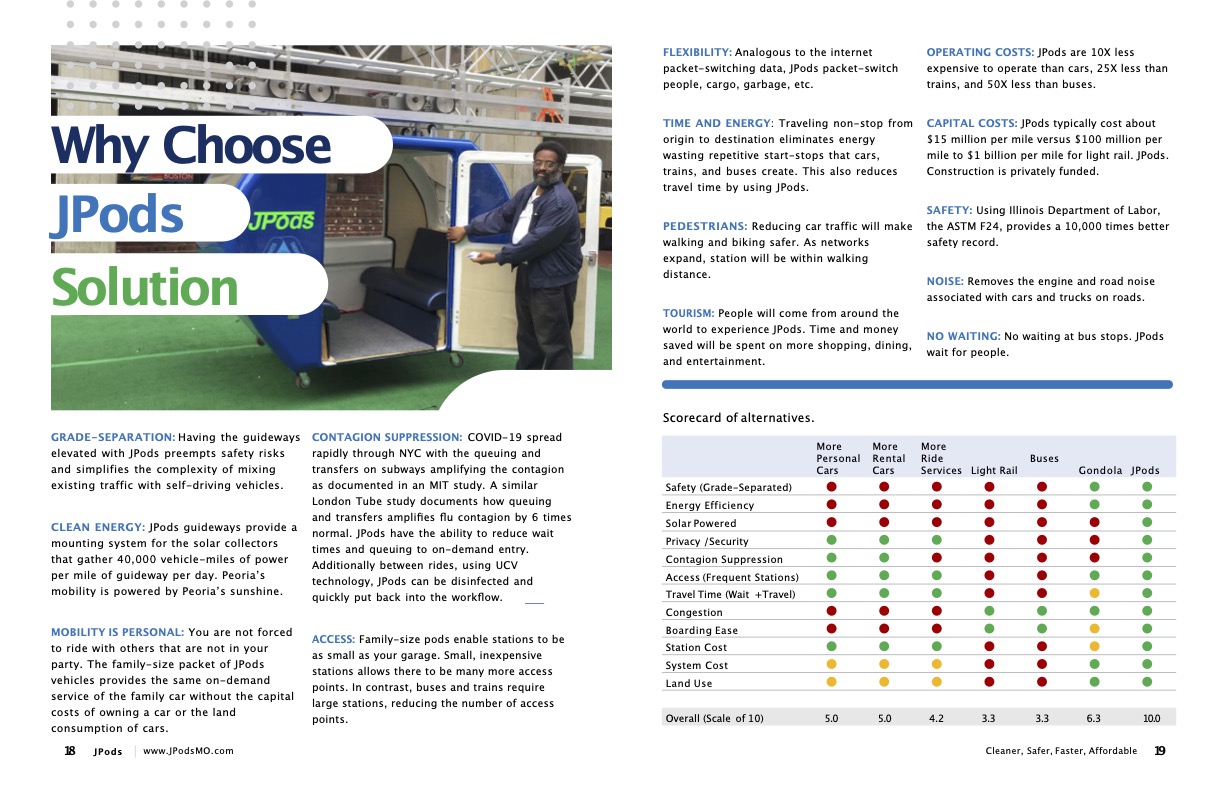


Background
Commerce and Community are Pedestrian:
Only 1.2% of land area in the 35 largest US cities are walkable land and generate 20% of GDP.
JPods grade-separated networks safety support walking and biking.
UnWalkable Cities:
In 1972 the US, Sweden and Denmark had the same per person oil consumption and pedestrian safety record. Following the 1973 Oil Embargo:
- US policies continue sprawl.
- Sweden and Denmark changed highway-centric policies to focus on more walkable and bikeable streets. Per person oil consumption was cut to 60% below the US. Pedestrian and bike rider kill-rates were cut to 400% below US policies.
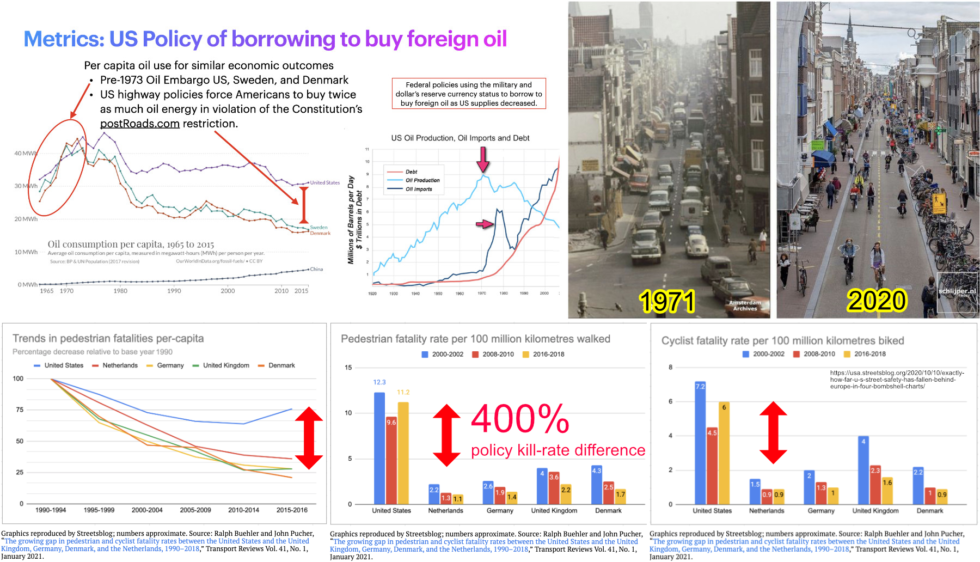
More what is failing, will fail:
Morgantown PRT, half a century of self-driving cars - zero vehicle caused injuries:
Walter Cronkite opens this 1972 coverage of President Nixon's daughter opening the Morgantown PRT with, "One of the big problems in this country is something most of run into every day, traffic jams..." More of what is failing will fail. Commerce and Community are pedestrian. Machines should be grade-separated so they do not create linear barriers to Commerce and Community.
Grade-control of freight railroads allows them to achieve 470 ton-mpg efficiency. Grade-separation of JPods and other PRT networks enables approaching freight railroad efficiencies and achieve the 3,000 times better safety record of theme park thrill rides over highways.
In its half-century of operation, the network caused zero reportable injuries. Highways seriously injure 2.4 million Americans per year. PRT provides an alternative to highways.
History of the Morgantown PRT, Oct 24, 1972 from Bill James on Vimeo.
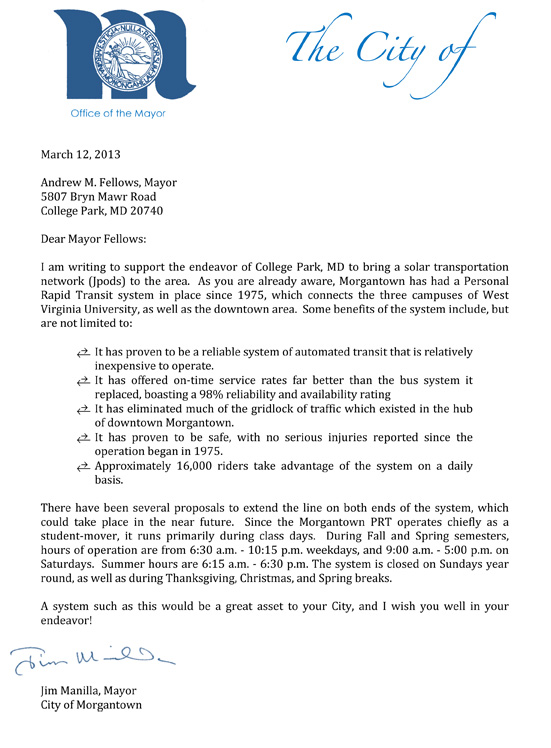
Congressional Study, Automated Guideway Transit, 1975:

This study was published to identify solutions to the 1973 Oil Embargo. Finding were that government “institutional failures” blocked Automated Guideway Transit innovations for “four to six decades (aside from some relatively minor cosmetic changes)… Compared with many other areas of entrepreneurial endeavor, the environment for innovation in transportation should be favorable. Urban transportation needs are extensive… In retrospect, the new systems efforts have served not to stimulate interest in new technology but to discourage already reluctant local transit operators from considering it.”
"Proponents of PRT view this concept as a reasonable supplement to the private automobile in high density urban areas and claim that PRT can provide a very much higher level of service than other modes of public transportation. Thus, it is argued that PRT systems would attract a significant percentage of the rides now being made in private automobiles and offer obvious benefits:
-
- less traffic congestion in urban areas.
- less land and fewer facilities used for automobile storage. . reduced travel time under more comfortable Circumstance. . less noise and air pollution.
- reduction in consumption of petroleum-derived fuels.
- reduction in requirements for new arterial roads and urban freeways.
It is contended that PRT would provide greater mobility for the transportation disadvantaged, i.e., the young, the elderly, the poor, and the handicapped."
Attempts by New Jersey's Legislature to break these "institutional failures":
-
- "c. It is in the State’s economic interest to investigate new types of service which may improve the usefulness and integration of existing platforms, provide fast, inexpensive travel options, reduce capital costs of projects, and reduce pollution from motor vehicle travel. Personal Rapid Transit (hereinafter “PRT”) is one such technology currently being made available."
-
- "d. According to the Federal Transit Administration, average capital cost per two-way mile for heavy rail is $150 million, and for light rail is $70 million. For operating cost per passenger mile: heavy rail is $1.20, light rail is $1.80. However, PRT has the potential to cost 37 much less than heavy and light-rail applications, carry high capacity, be flexibly located, and require much less physical “footprint,” potentially reducing easement impact for currently scheduled projects. PRT studies have shown a capital cost of about one-tenth the cost of existing rail technology, with similarly low operating costs."
-
- New Jersey Legislature Study by BAH 070515 Associated TRB slidedeck.
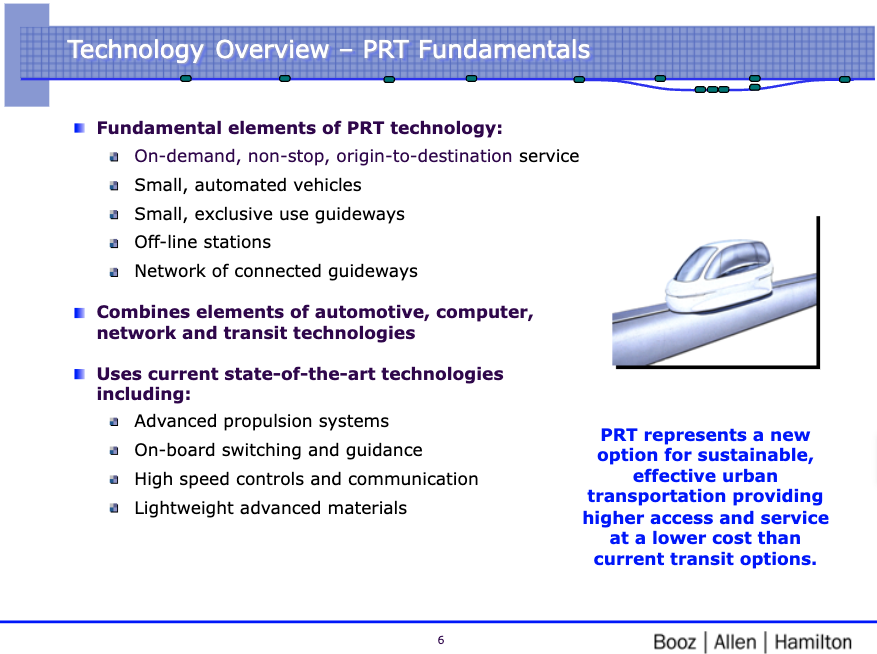
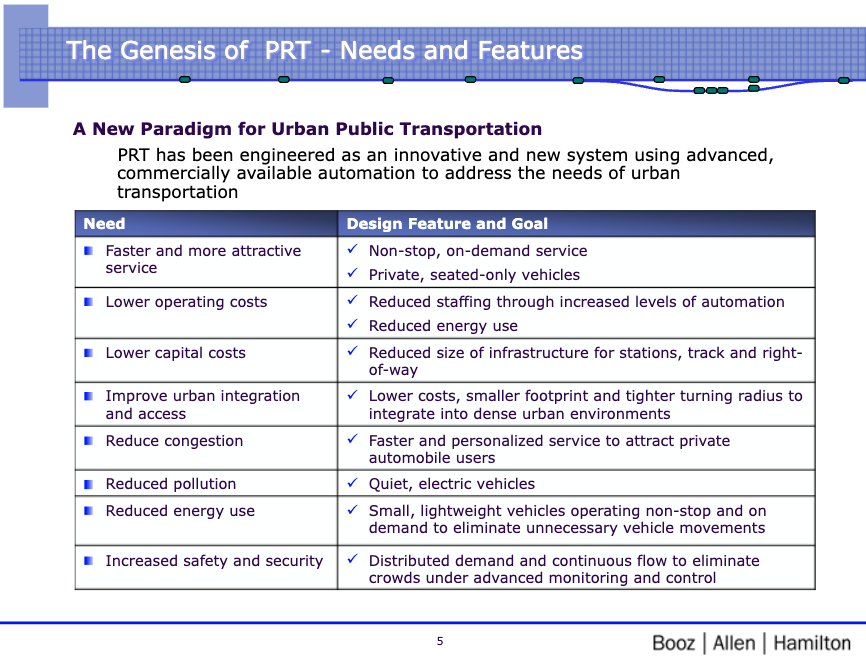
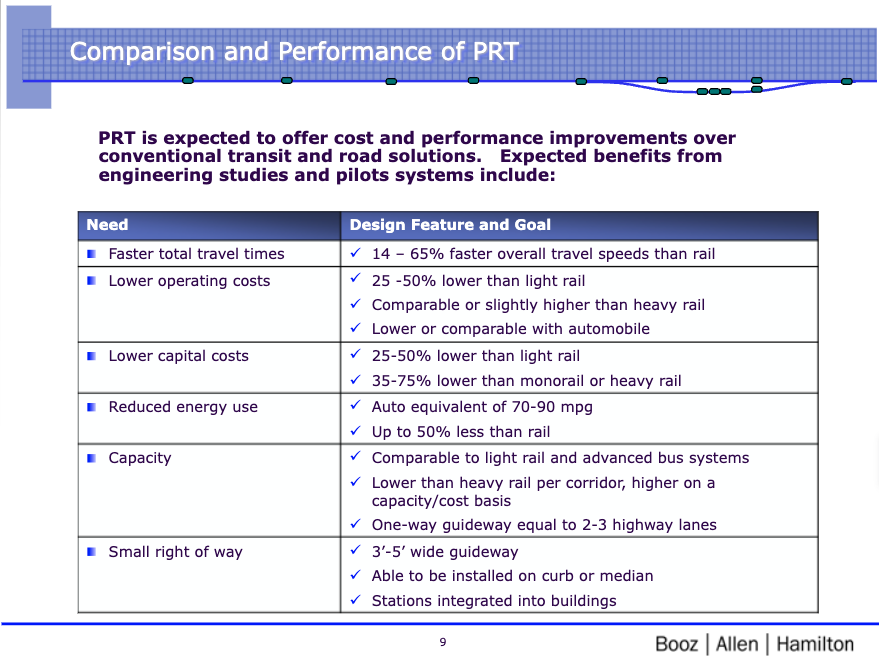

End of Affordable Oil
Without action, it seems the oil price crisis of 2008 will repeat by 2026:
-
- 85% of 153 oil executives agreed with the Dallas Federal Reserve survey question: "Do you expect a significant tightening of the oil market by the end of 2024, given the current underinvestment in exploration?"
-
- Cited comment: “Shale core exhaustion and inventory concerns are mainstream and well-documented issues. Shale will likely tip over in five years, and U.S. production will be down 20 to 30 percent quickly. When it does—this feels like watching the steam roller scene in Austin Powers. Oil prices in the late 2020s will be something to behold.”
Each car costs a family about $9,282, is parked 95% of the time with ~85% of car costs leave the local economy. 2.24 cars per household (278.06 million cars, 124.01 million households)
North Dakota Governor on Strong Towns


